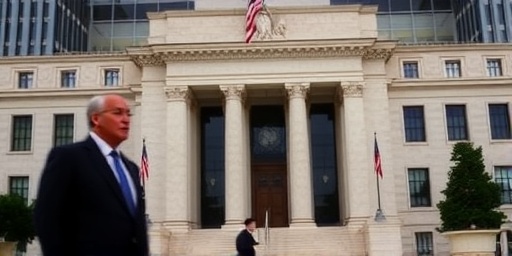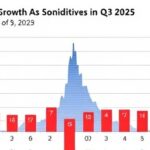U.S. stock futures plunged in pre-market trading today, signaling a rough open for global markets as Federal Reserve officials delivered conflicting messages on the prospects for interest rate cuts. The Dow Jones Industrial Average futures dropped over 300 points, while S&P 500 and Nasdaq futures fell by 1.2% and 1.5% respectively, reflecting heightened uncertainty in the Stock market amid diverging views from the Fed. This comes just hours before major corporate earnings reports from tech giants and financial firms are set to influence investor sentiment further.
Fed Hawks and Doves Clash Over Rate Cut Urgency
The Federal Reserve’s latest policy communications have injected fresh volatility into the Stock market, with officials splitting along hawkish and dovish lines regarding potential rate cuts. Fed Chair Jerome Powell, in a speech yesterday at the Economic Club of New York, reiterated a data-dependent approach but stopped short of committing to cuts, emphasizing persistent inflation risks. ‘We are well positioned to wait for more clarity on the economic path,’ Powell stated, underscoring the Fed’s caution amid recent hotter-than-expected inflation data.
Contrasting Powell’s measured tone, Atlanta Fed President Raphael Bostic emerged as a notable hawk, warning in an interview with Bloomberg that premature rate cuts could reignite inflationary pressures. Bostic, who dissented against recent Fed decisions favoring pauses, argued, ‘The labor market remains robust, and wage growth is still elevated—cutting rates now would be a mistake that could unwind our progress.’ His comments echoed concerns from other regional presidents, including those from the St. Louis and Cleveland Feds, who have flagged upside risks to the 2% inflation target.
On the dovish side, San Francisco Fed President Mary Daly struck a more conciliatory note during a panel discussion at the Jackson Hole symposium’s follow-up events. Daly suggested that if inflation cools further in upcoming CPI reports, the case for rate cuts in the first half of next year strengthens. ‘We’re seeing signs of disinflation in services and housing, which could allow us to ease policy without derailing growth,’ she remarked. This divergence has amplified uncertainty, as markets now price in only a 65% chance of a 25-basis-point cut at the March FOMC meeting, down from 75% a week ago, according to CME FedWatch Tool data.
Historically, such splits within the Fed have preceded significant market swings. During the 2019 policy debates, similar hawk-dove tensions led to a 10% correction in the S&P 500 before rate cuts materialized. Analysts at Goldman Sachs noted in a research note that this current rift could extend the Stock market‘s consolidation phase, with the VIX fear index spiking 15% to 18.5 in overnight trading.
U.S. Stock Futures Drag Down European and Asian Markets
The ripples from Fed uncertainty extended far beyond U.S. borders, pulling global stock markets into a synchronized decline. In Europe, the FTSE 100 opened down 1.1%, shedding 85 points, as investors fretted over transatlantic trade implications if U.S. monetary policy tightens further. Germany’s DAX index followed suit, dropping 1.3% or 190 points, with banking stocks like Deutsche Bank leading the losses amid fears of higher borrowing costs persisting.
Asia-Pacific markets fared no better, with Japan’s Nikkei 225 closing 2.1% lower after a volatile session, erasing gains from the previous week’s yen weakening. South Korea’s KOSPI index tumbled 1.8%, driven by semiconductor giants like Samsung Electronics, which fell 3% on concerns that delayed U.S. rate cuts could crimp global tech demand. Hong Kong’s Hang Seng Index plunged 2.3%, with property developers under pressure as higher U.S. rates bolster the dollar, strengthening it against regional currencies.
Back in the U.S., the stock market’s pre-market weakness was broad-based. Energy stocks, sensitive to interest rate environments due to their impact on capital-intensive projects, saw futures for ExxonMobil and Chevron decline 1.5%. Meanwhile, growth-oriented tech names like Apple and Nvidia dragged Nasdaq futures lower, with the latter down 2% in sympathy trading. Bond yields reflected the unease, with the 10-year Treasury yield climbing to 4.25%, up 8 basis points overnight, as investors shifted toward safer assets amid the rate cut uncertainty.
Commodity markets also felt the pinch; crude oil prices dipped below $75 per barrel for WTI, a 2% decline, as higher rates could suppress economic activity and demand. Gold, often a hedge against Fed policy surprises, bucked the trend with a modest 0.5% gain to $2,050 per ounce. Market watchers at JPMorgan highlighted that this global sell-off mirrors the 2022 bear market entry, when Fed hiking cycles triggered a 25% S&P 500 drop, though current valuations remain more stretched at 21 times forward earnings.
Major Earnings Reports Loom as Investors Brace for Volatility
Adding fuel to the stock market’s turbulent start, a slate of high-profile earnings reports is due later today, intensifying the uncertainty surrounding Federal Reserve decisions. Wall Street heavyweights including JPMorgan Chase, Wells Fargo, and Citigroup are slated to release third-quarter results, with focus on net interest income and provisions for loan losses in a high-rate environment. Analysts expect JPMorgan to report earnings per share of $4.15, a 5% year-over-year increase, but any guidance hinting at slower loan growth could exacerbate rate cut jitters.
In the tech sector, where rate sensitivity is acute due to discounted cash flow valuations, Microsoft and Alphabet will unveil results after the bell. Microsoft’s cloud division, Azure, is projected to grow 28% year-over-year, but investors will scrutinize commentary on AI capital expenditures amid potential prolonged higher rates. Alphabet faces scrutiny over advertising revenue, expected at $65 billion, with any softness attributed to economic uncertainty potentially pressuring its stock, which has risen 35% year-to-date.
Other notable reporters include Delta Air Lines and BlackRock, whose performances could signal broader economic health. Delta’s earnings are forecasted at $1.10 per share, with capacity constraints from Boeing delays adding risks. BlackRock, managing $10 trillion in assets, may provide insights into flows into fixed-income products as rate cut bets wane. According to FactSet, 85% of S&P 500 companies have beaten earnings expectations this season, but the bar is rising, with consensus estimates revised down 2% in the past month due to Fed-induced uncertainty.
Historical precedents show earnings seasons can pivot markets during Fed transitions. In 2000, dot-com earnings misses amid rate hike fears triggered a Nasdaq crash. Conversely, strong reports in 2023 helped the index surge 43%. Options trading volume has surged 40% ahead of these releases, per Cboe data, indicating traders are positioning for swings. If results disappoint, it could deepen the stock market decline, pushing the S&P 500 toward its 200-day moving average support at 5,200.
Economic Data and Fed Minutes Fuel Ongoing Rate Cut Debates
Beneath the surface of today’s market turmoil lies a web of recent economic indicators that have widened the Federal Reserve’s internal divide on rate cuts. September’s nonfarm payrolls added 254,000 jobs, surpassing estimates and signaling labor market resilience, which hawks like Bostic cite as justification for holding rates steady at 5.25-5.50%. Unemployment ticked up to 3.8%, but wage growth moderated to 4.1%, offering doves like Daly ammunition for arguing that cuts are warranted to prevent a slowdown.
Inflation metrics paint a mixed picture: Core PCE rose 2.7% year-over-year in August, above the Fed’s target, while retail sales grew 0.5% in September, beating forecasts but tempered by higher rates curbing big-ticket purchases. The upcoming release of FOMC minutes from the September meeting, due tomorrow, is anticipated to reveal the extent of dissent—three officials voted against the pause, per prior disclosures. ‘The minutes could clarify if the Fed is inching toward cuts or digging in,’ said Krishna Guha, vice chairman at Evercore ISI, in a client note.
Globally, the ECB’s recent 25-basis-point cut to 3.75% has highlighted the Fed’s outlier status, with U.S. rates now 175 basis points higher, pressuring emerging markets through capital outflows. The dollar index (DXY) strengthened 0.8% to 106.5, its highest in six months, impacting exporters from Europe to Asia. In the U.S., mortgage rates hovered near 7%, stifling housing starts that fell 5.1% in September, per Census Bureau data, and underscoring how prolonged uncertainty could tip the economy toward recession risks estimated at 20% by Goldman Sachs economists.
Sector-specific impacts are emerging: Utilities and real estate investment trusts (REITs) dropped 2% in futures, as higher-for-longer rates erode dividend appeal. Consumer discretionary stocks, including Amazon and Tesla, face headwinds from squeezed household budgets, with retail sales ex-autos flatlining. Conversely, financials showed relative resilience, up 0.2% in pre-market, betting on sustained net interest margins.
Looking ahead, the stock market’s trajectory hinges on resolving this Fed uncertainty. Investors are eyeing the November CPI report, due in two weeks, which could shift rate cut probabilities if it shows progress toward 2%. Market strategists at Morgan Stanley recommend defensive positioning, favoring quality dividend payers over high-growth names until policy clarity emerges. If diverging views persist, we could see prolonged sideways trading, with the S&P 500 range-bound between 5,400 and 5,600 through year-end. Meanwhile, today’s earnings could either soothe or inflame nerves, setting the stage for a pivotal FOMC meeting in December where the first cut might finally materialize—or not.









